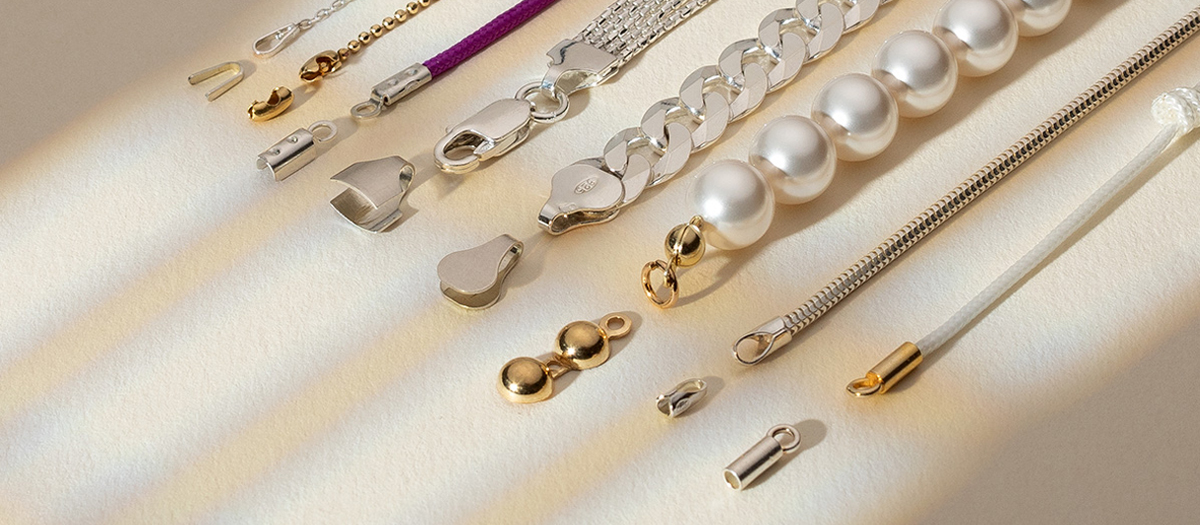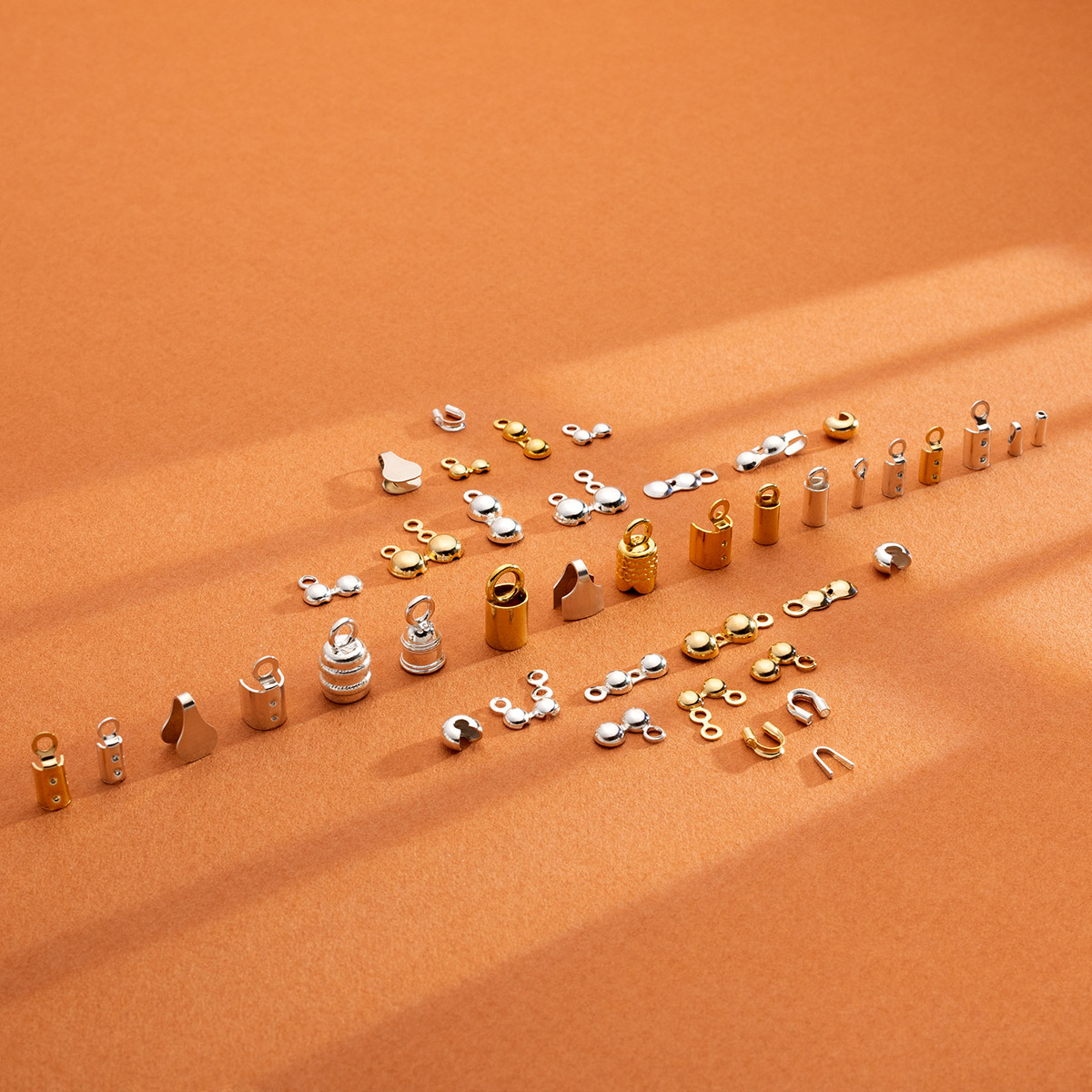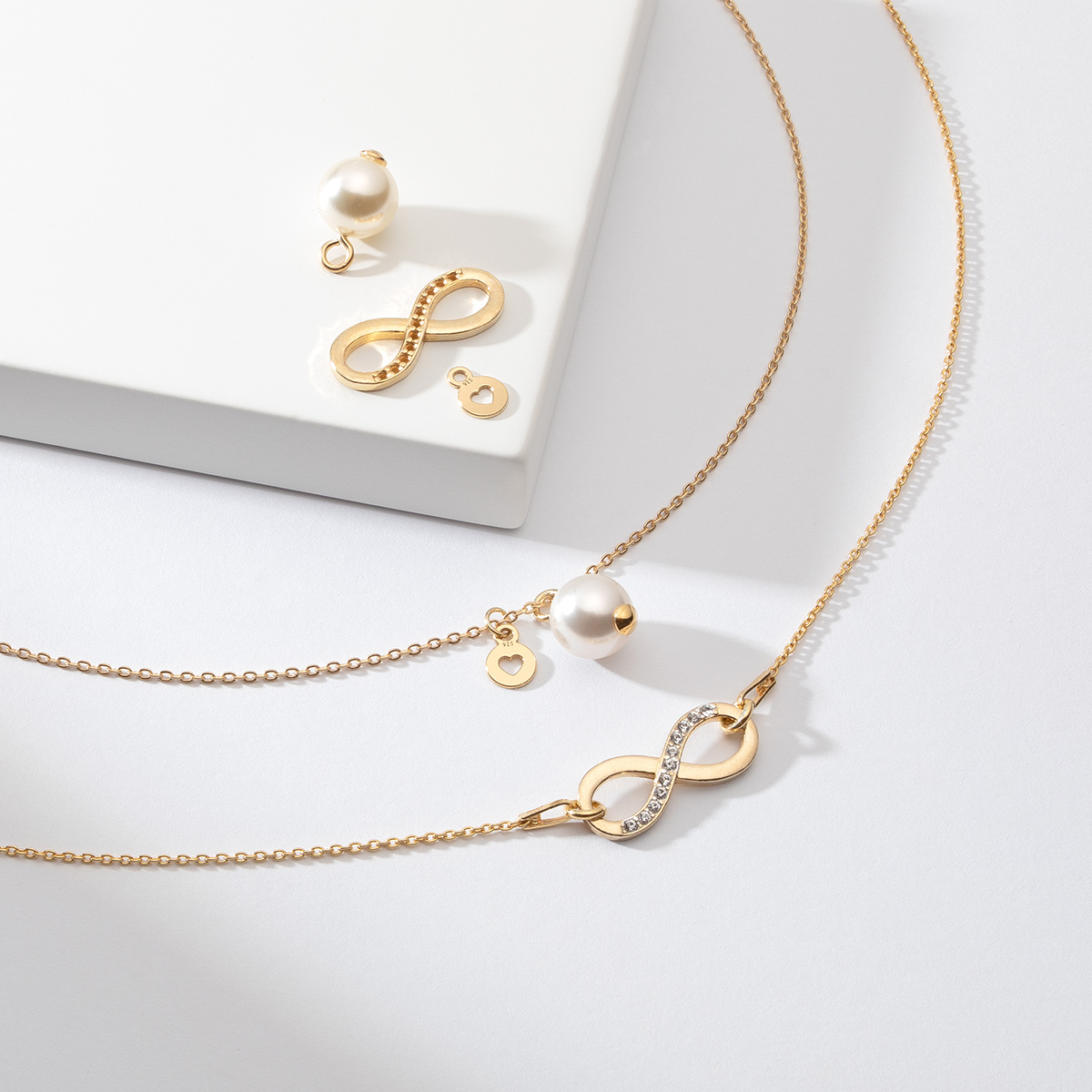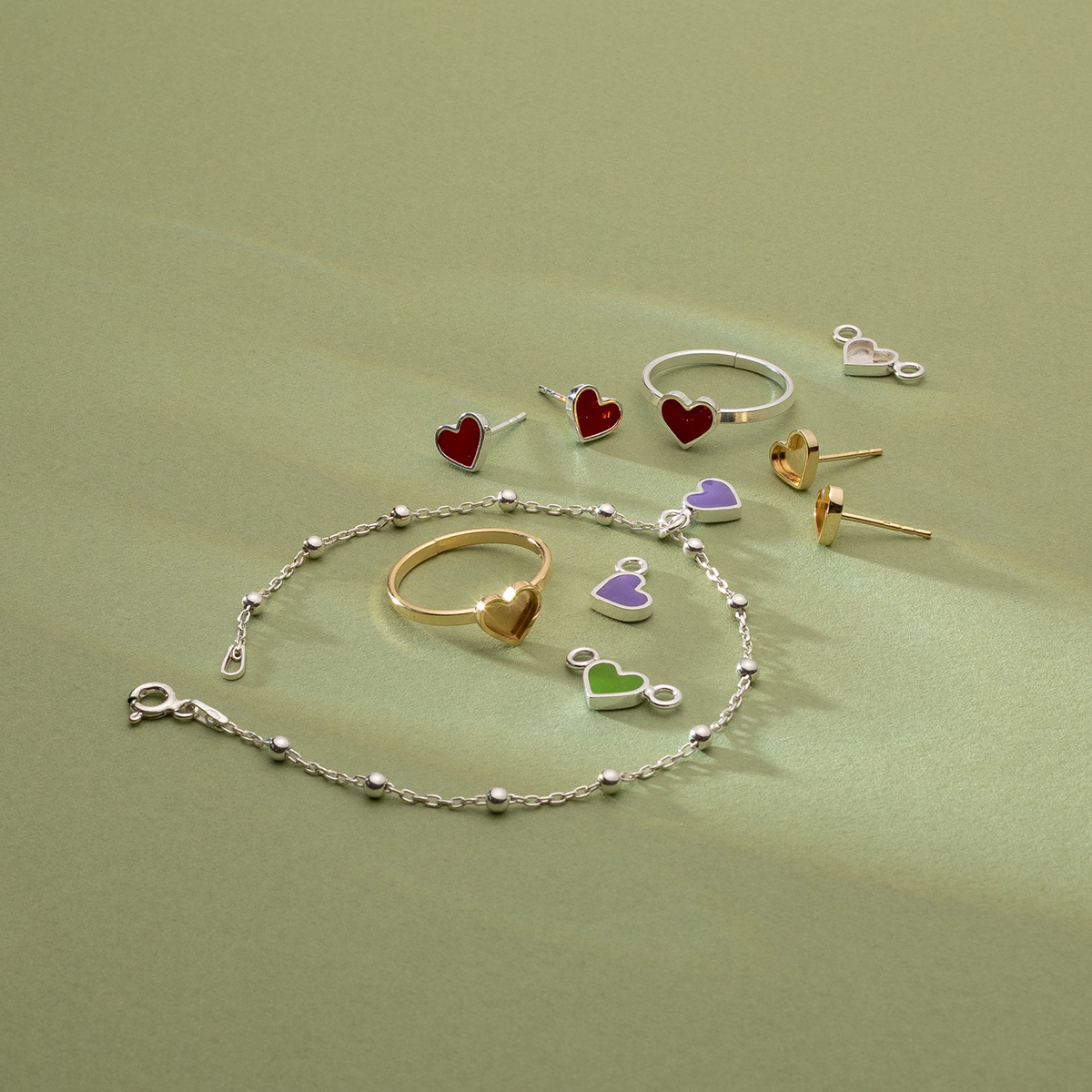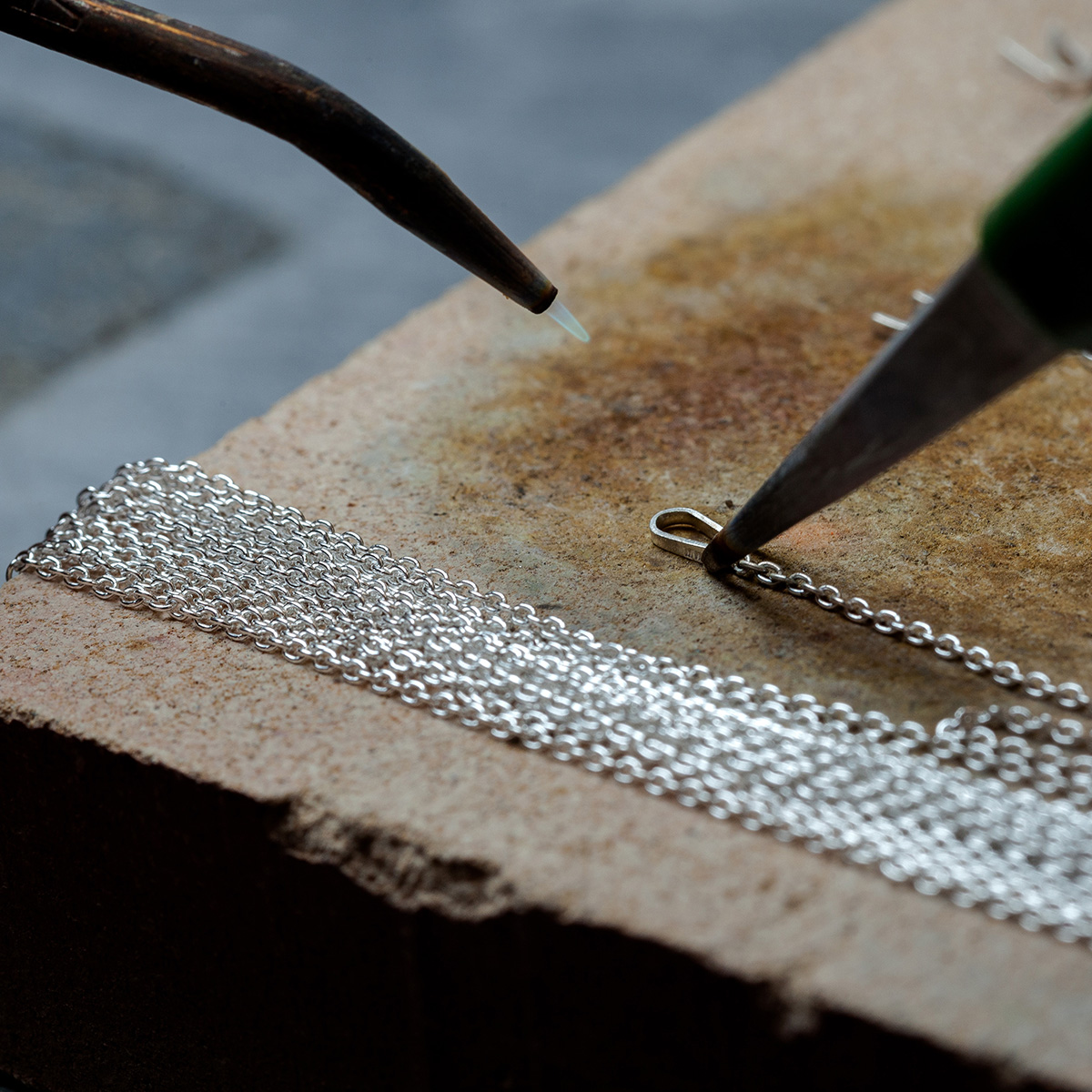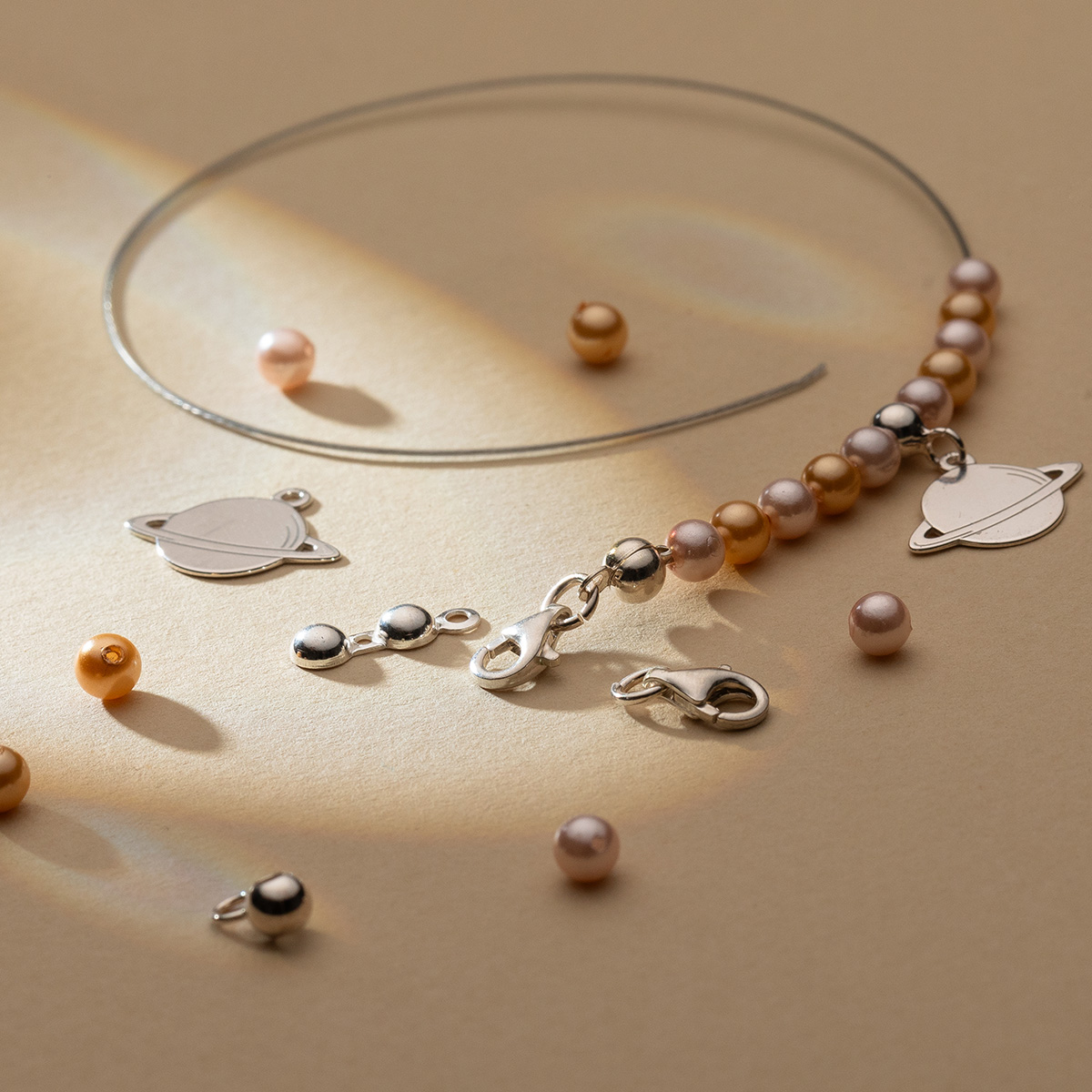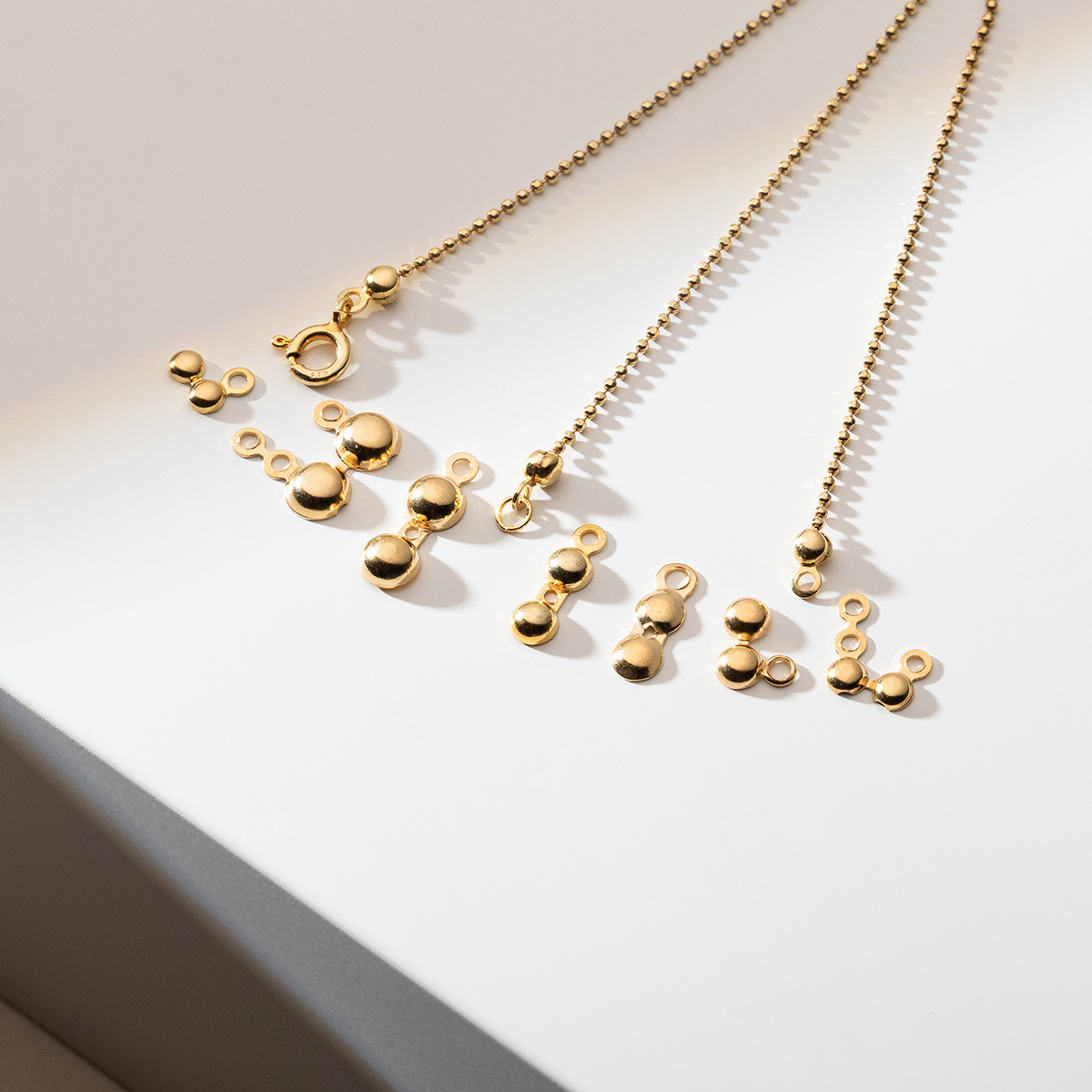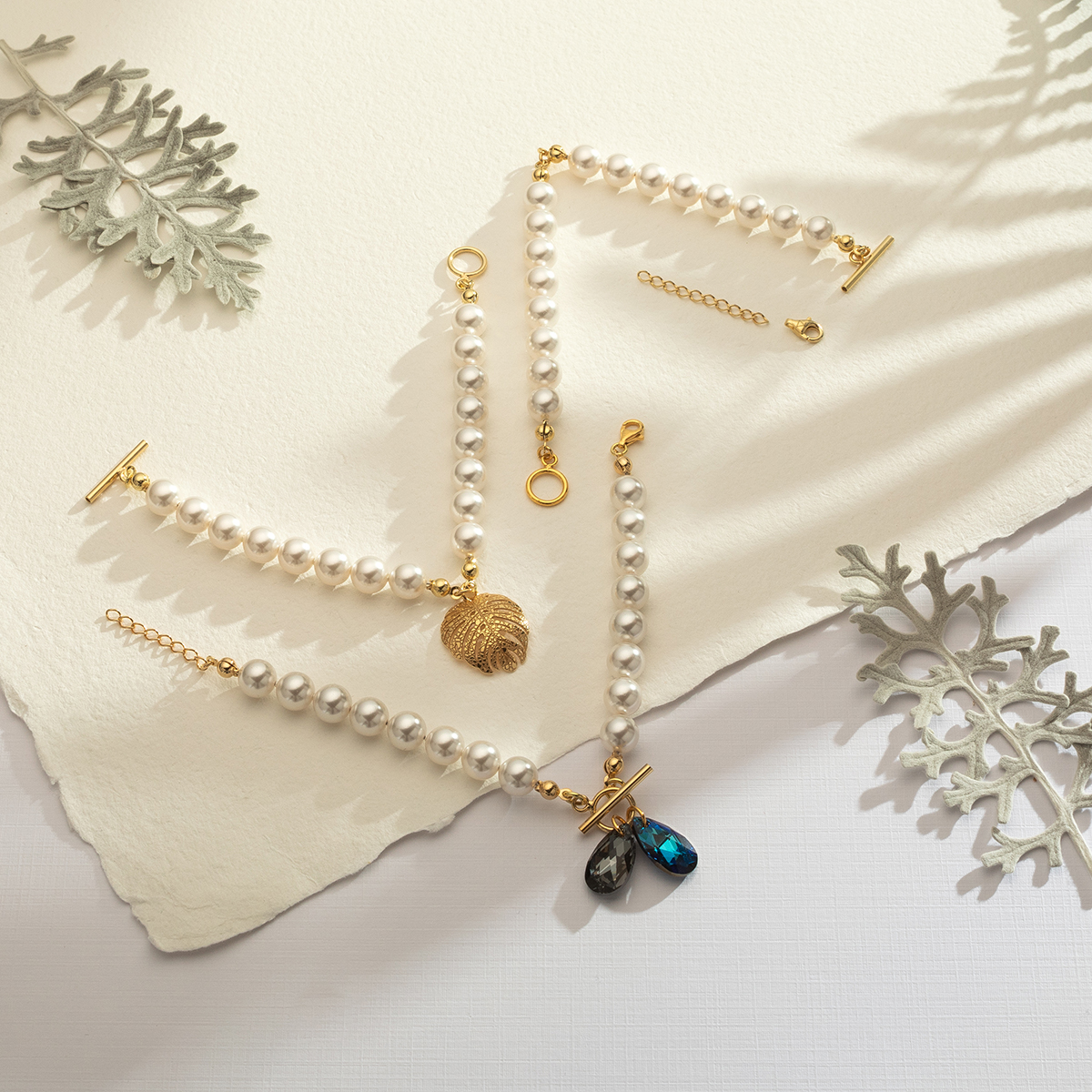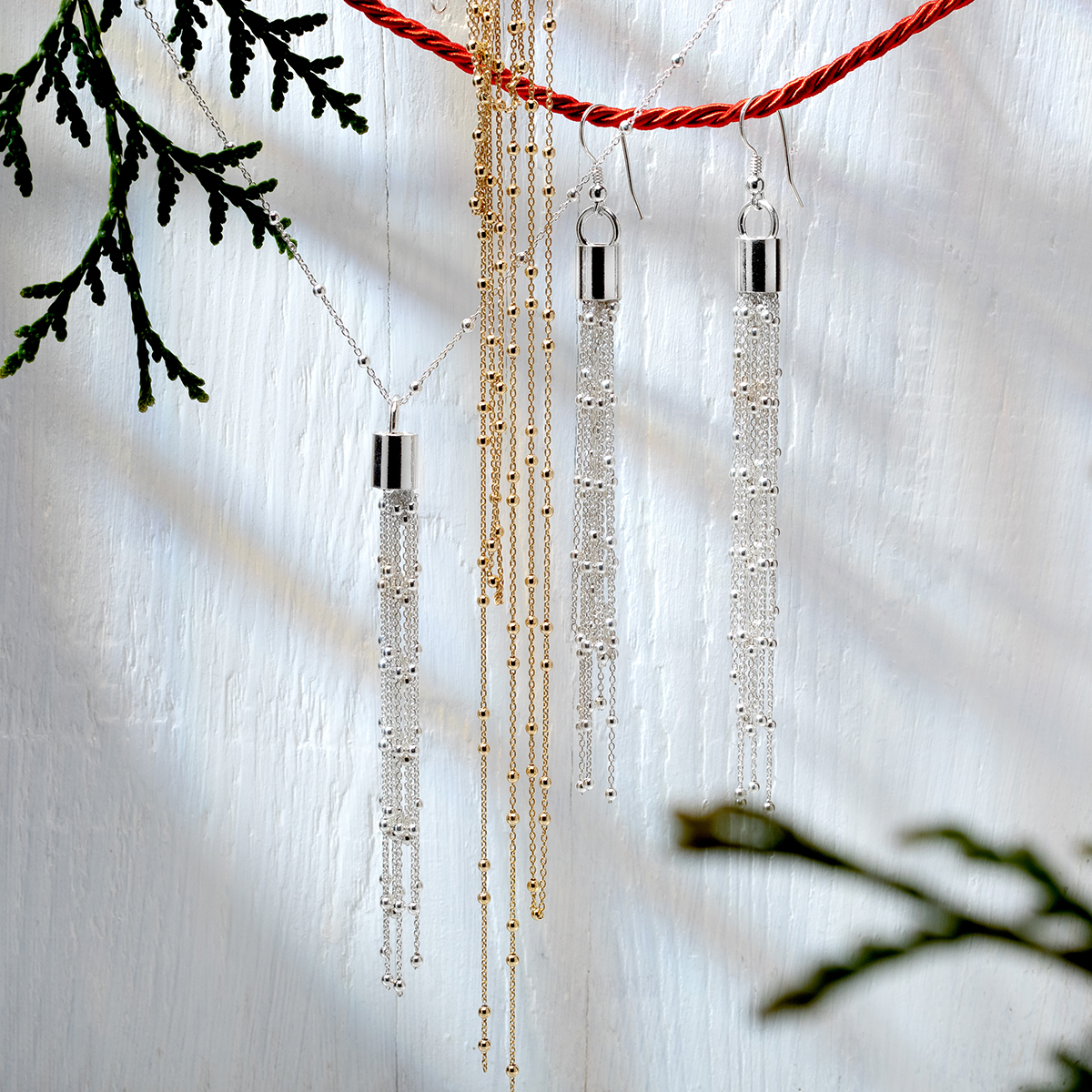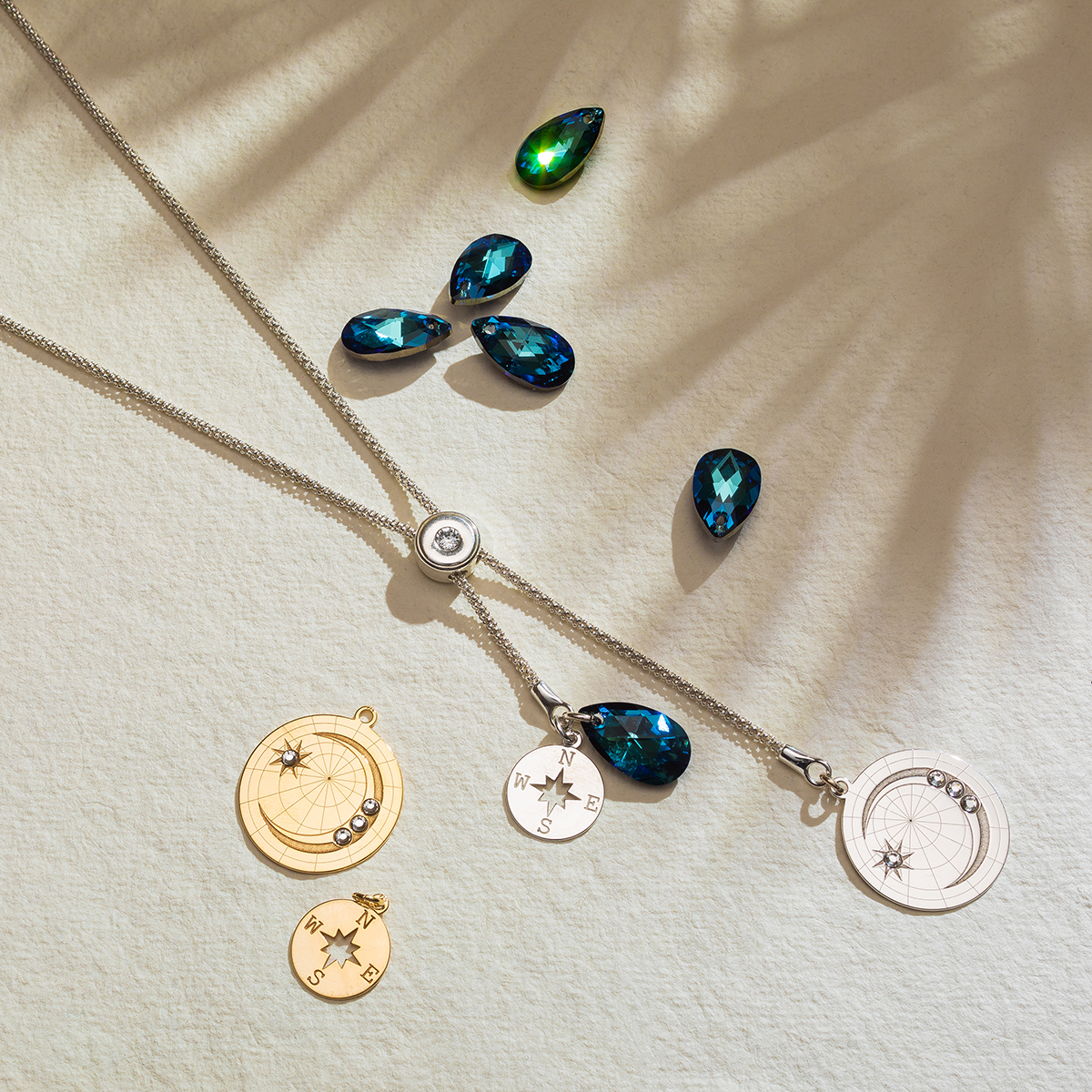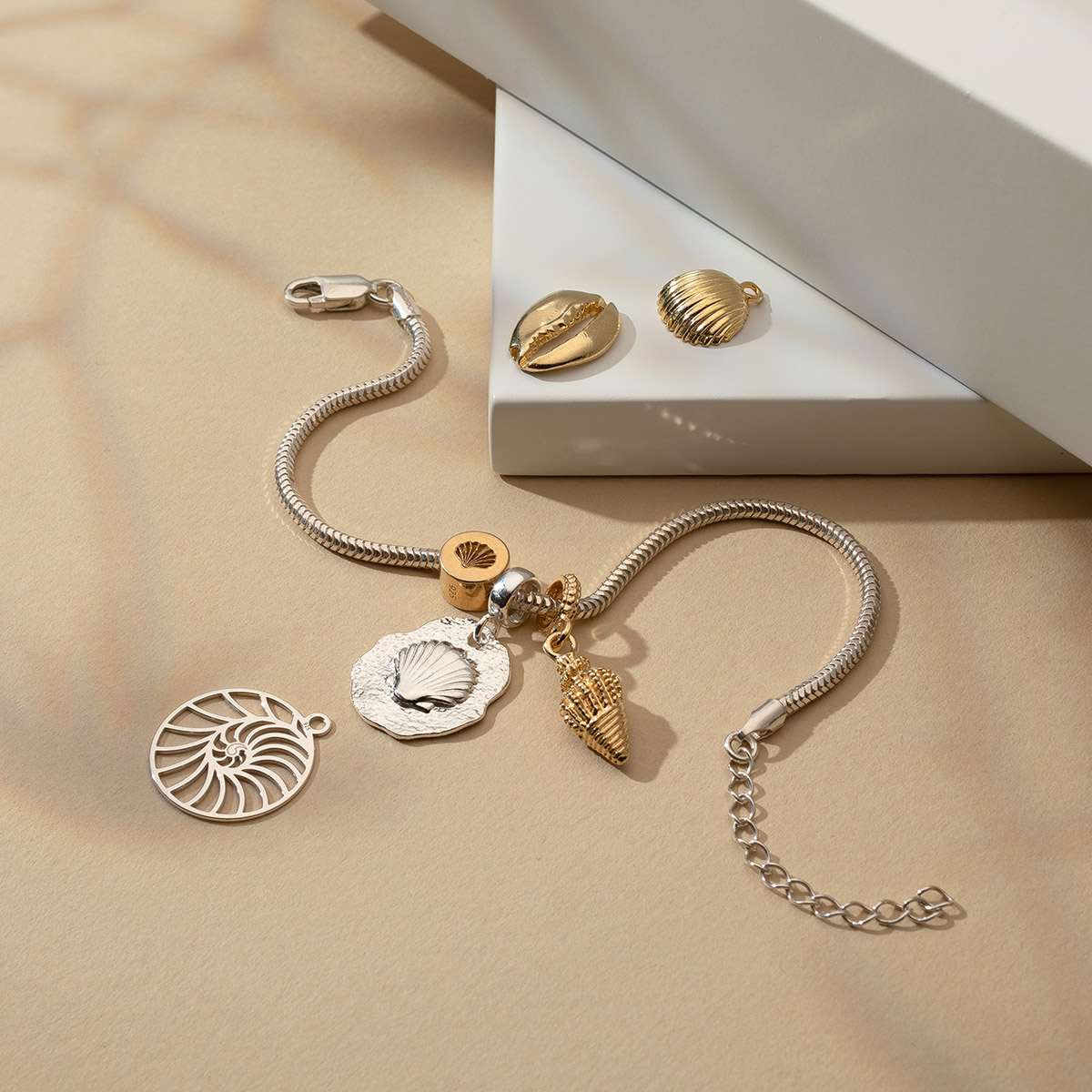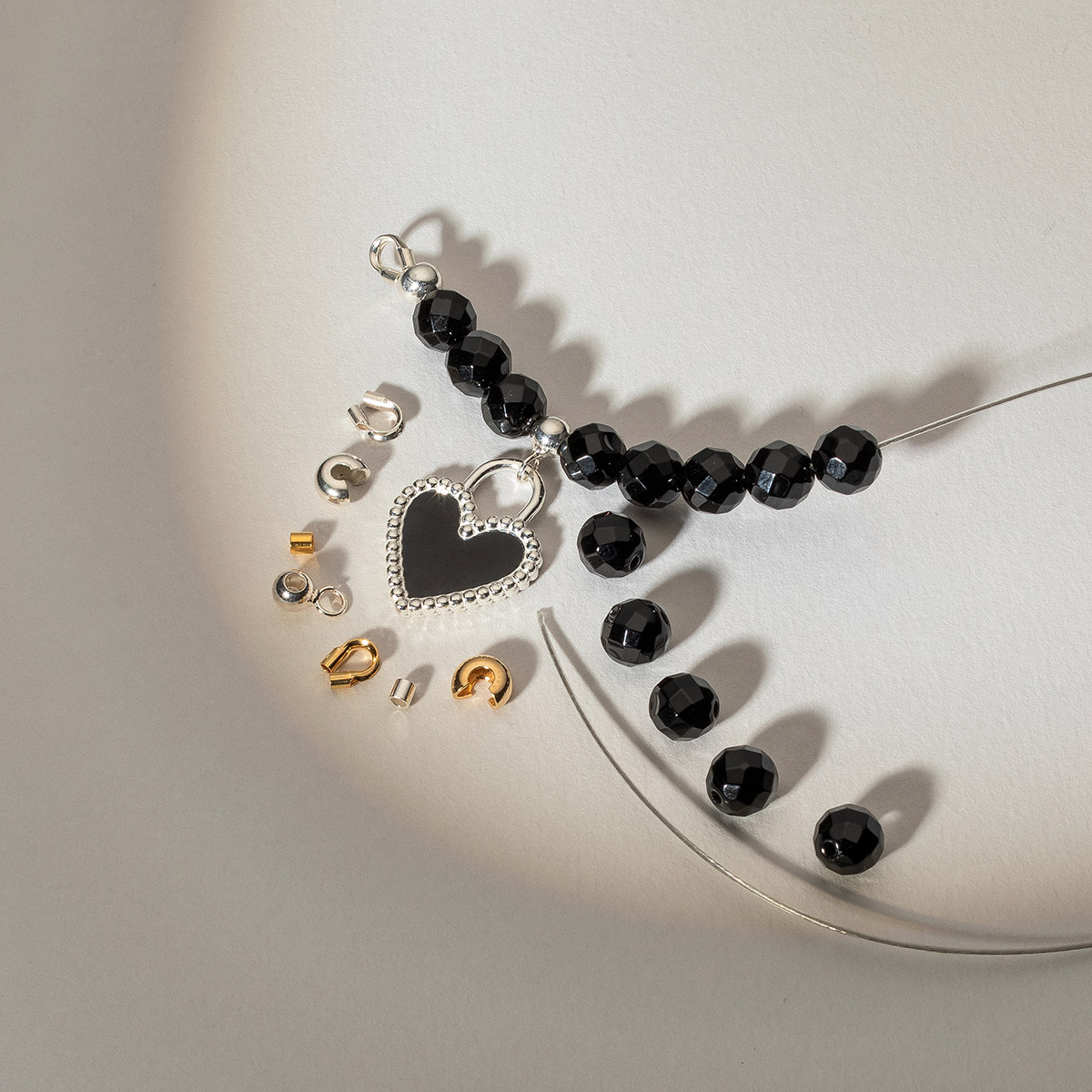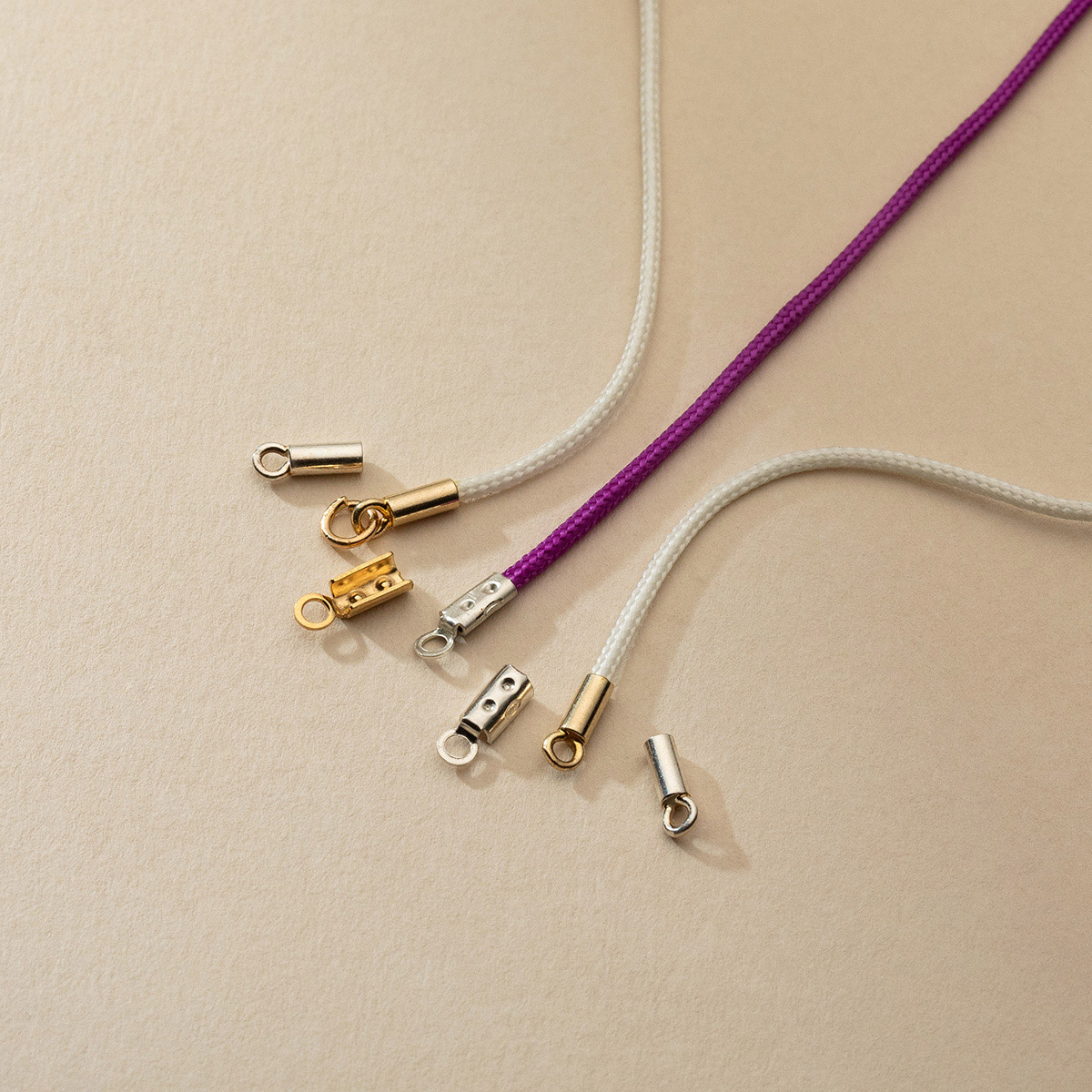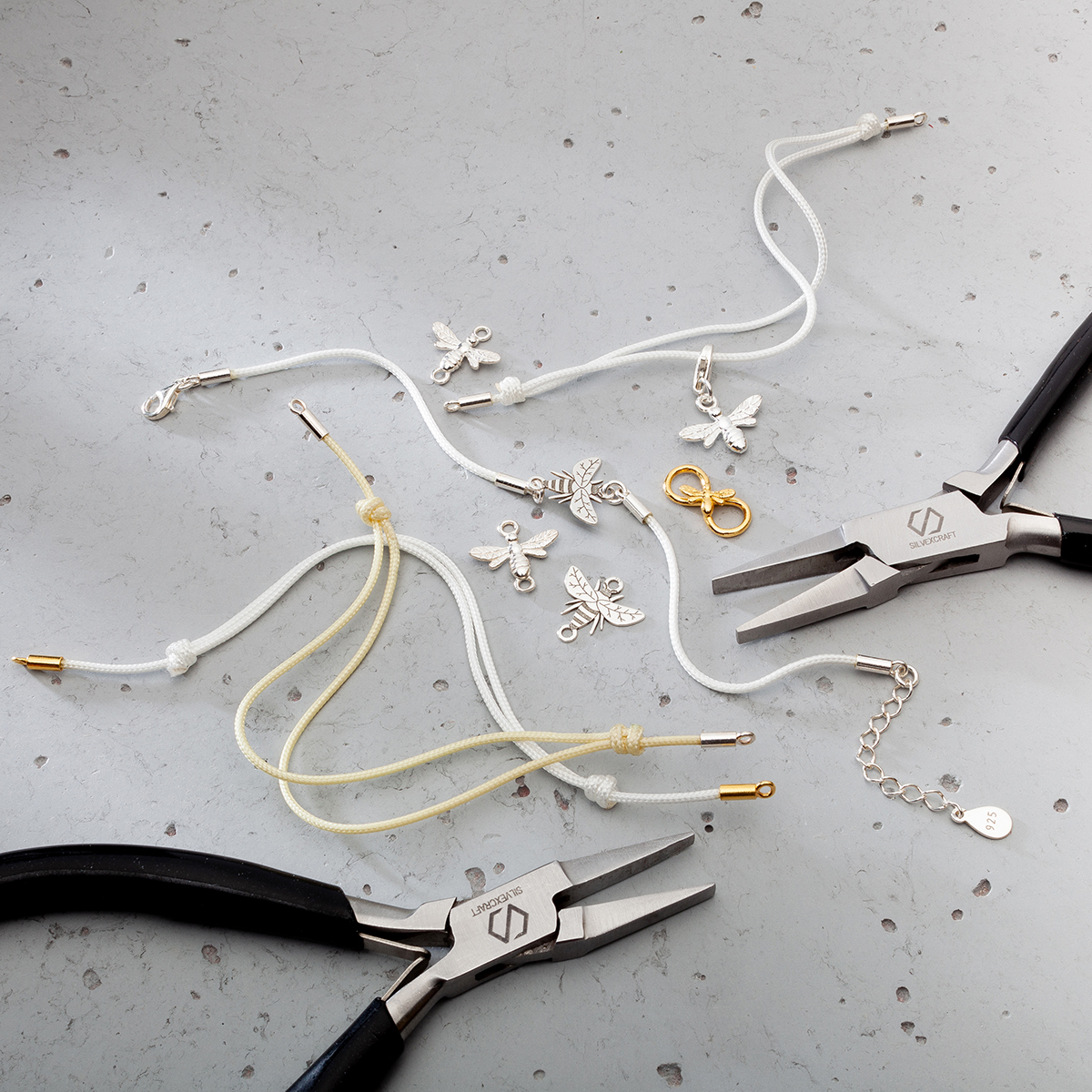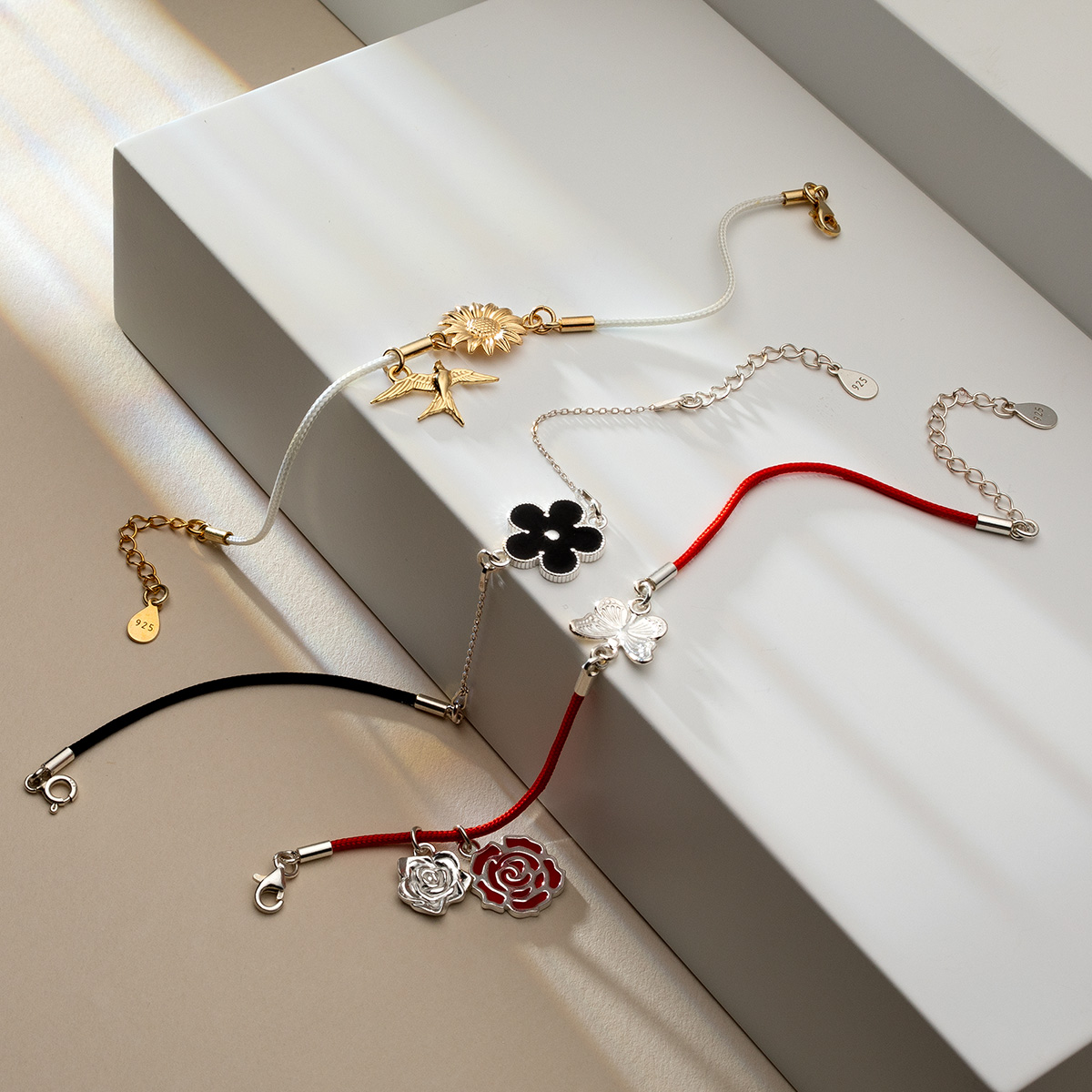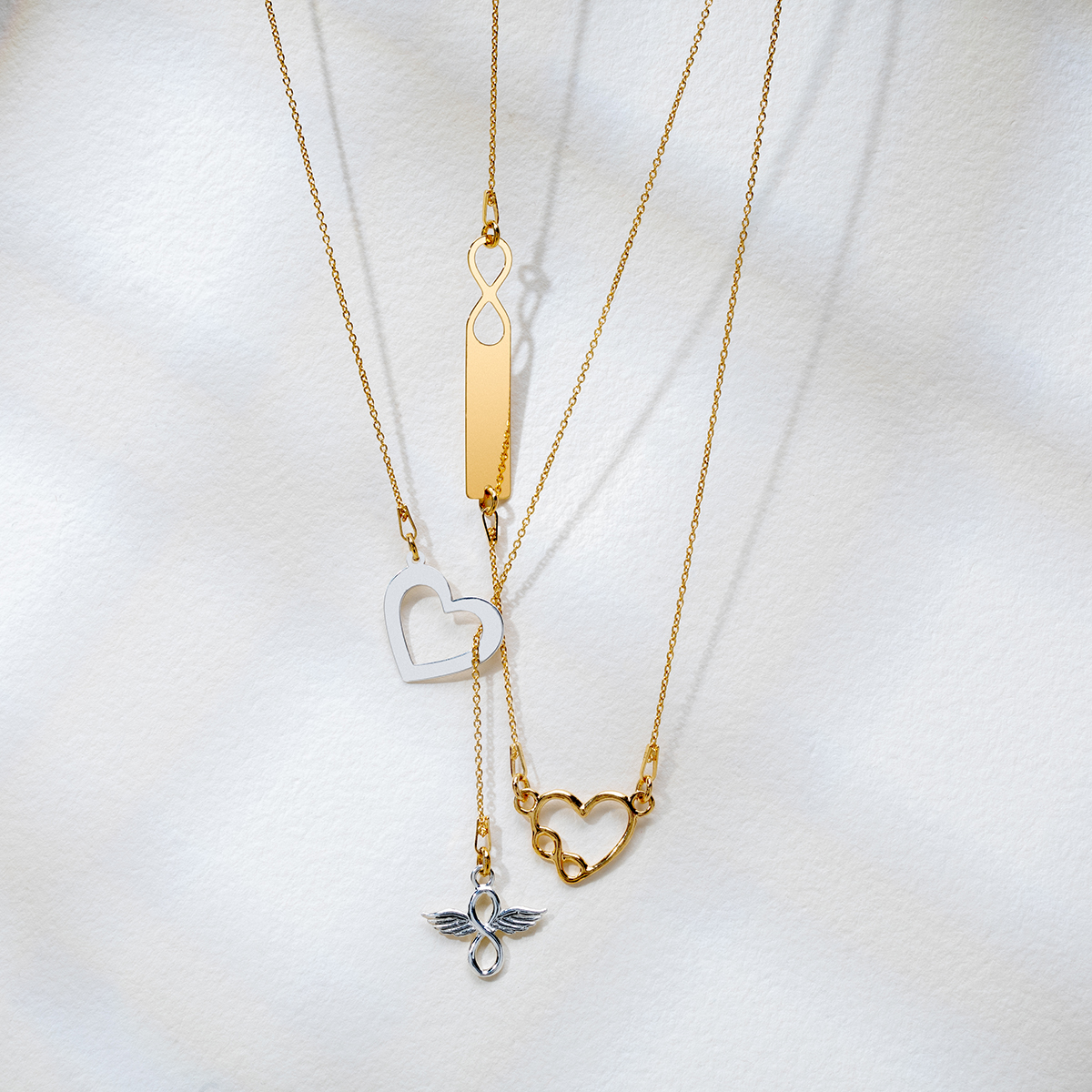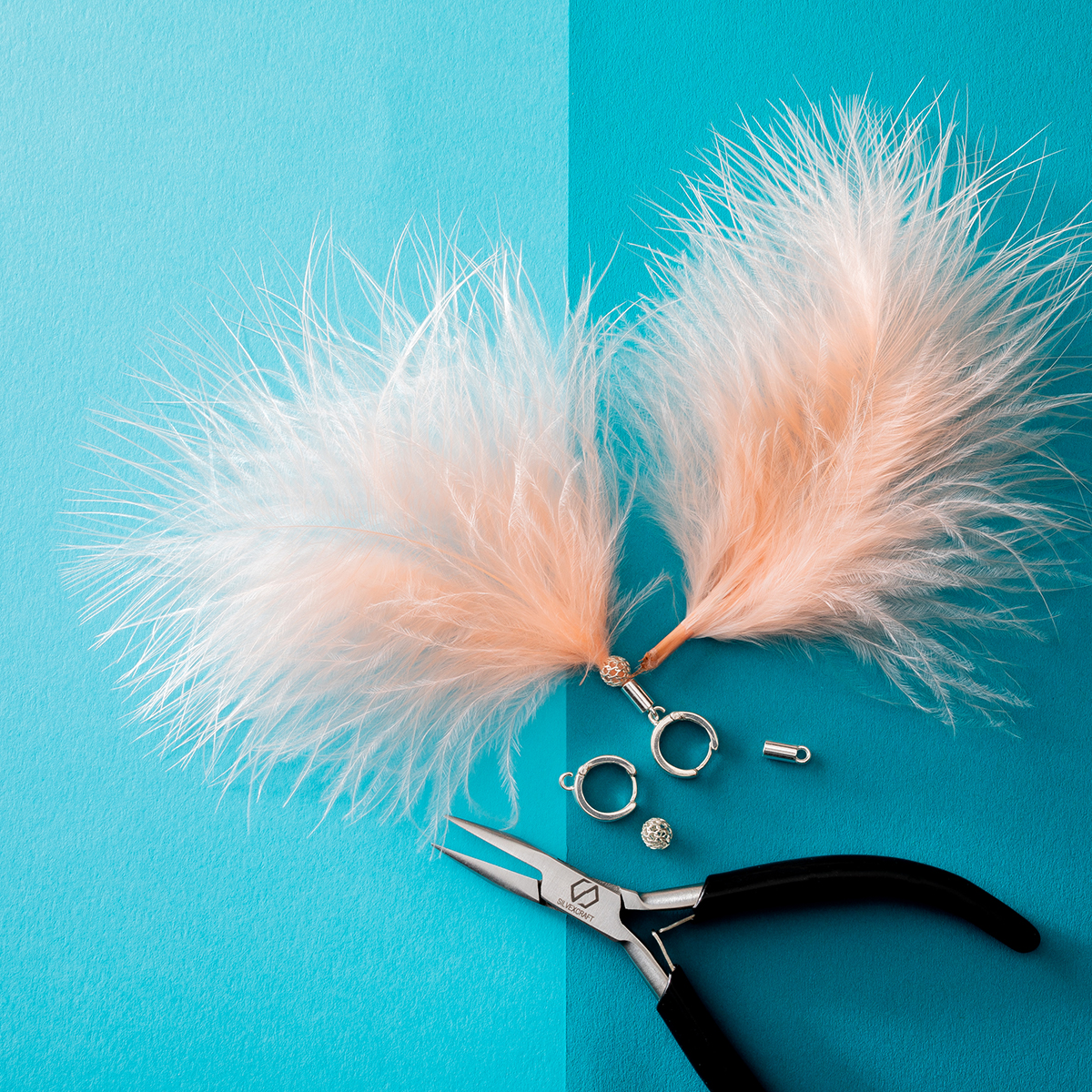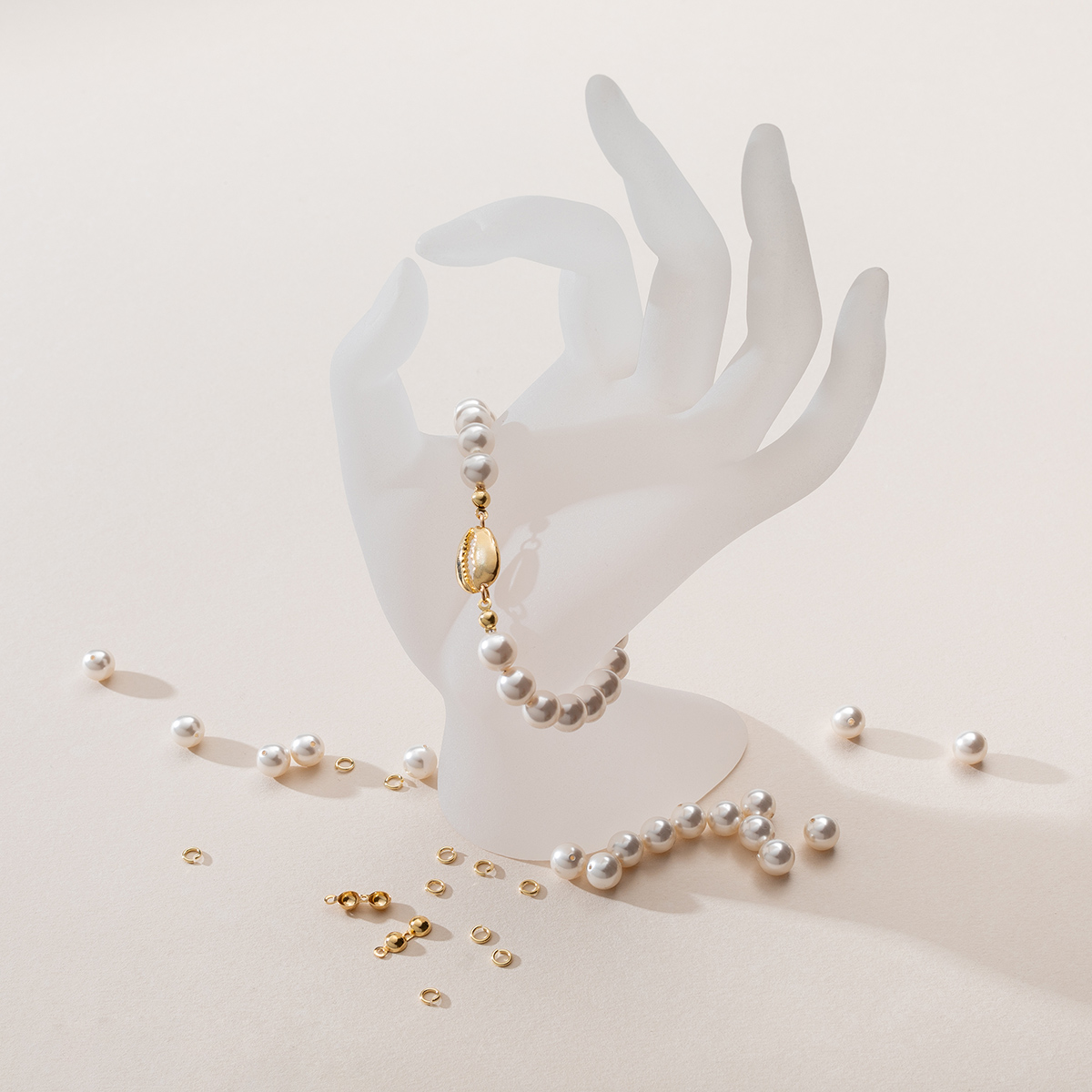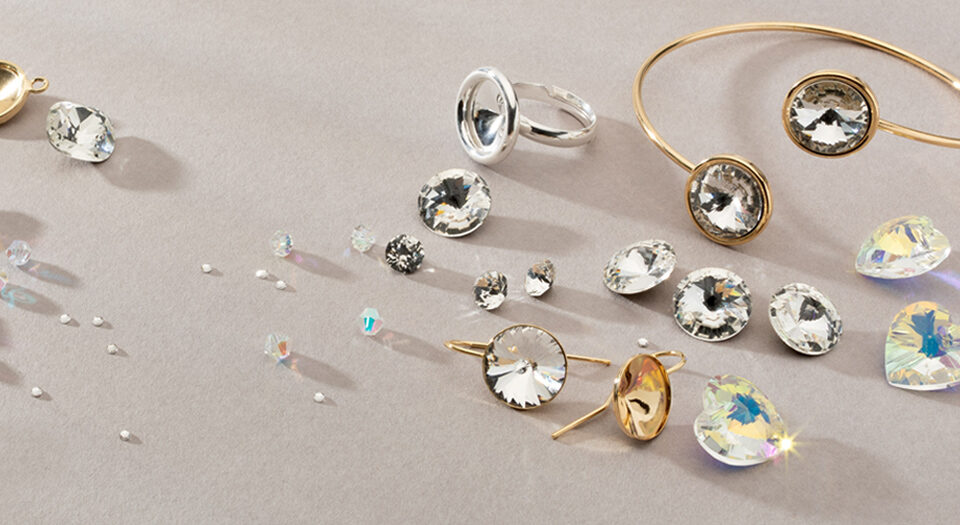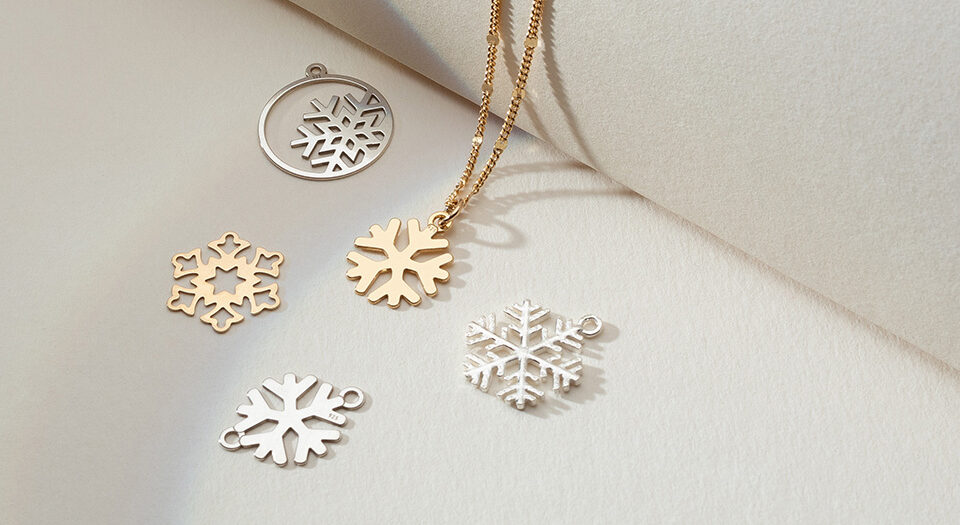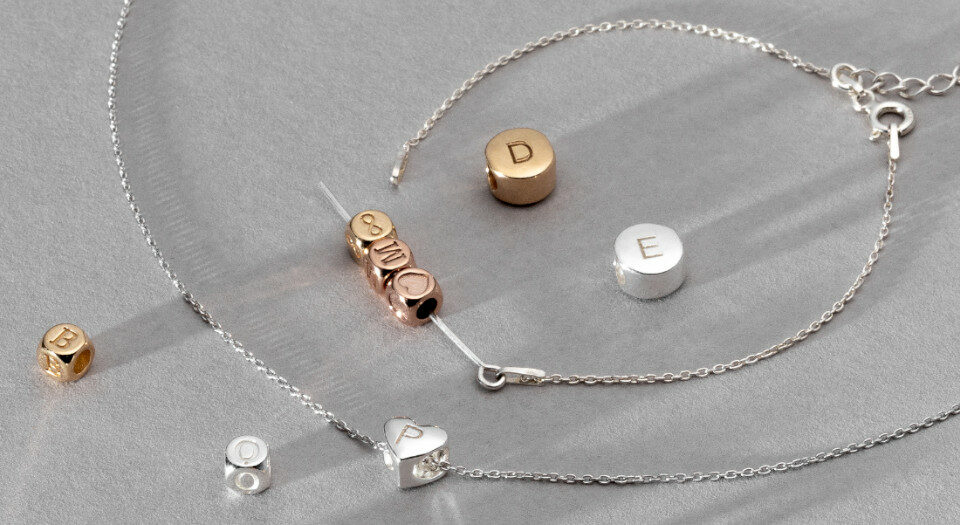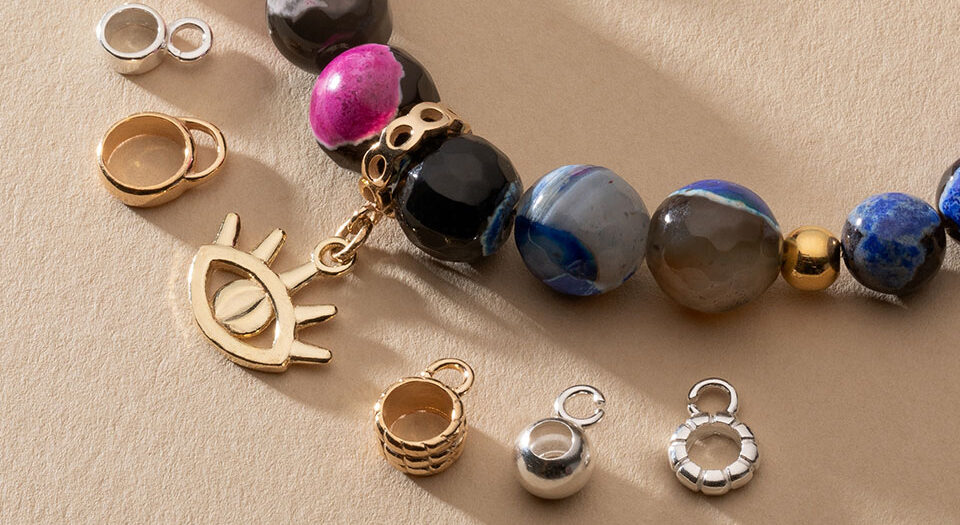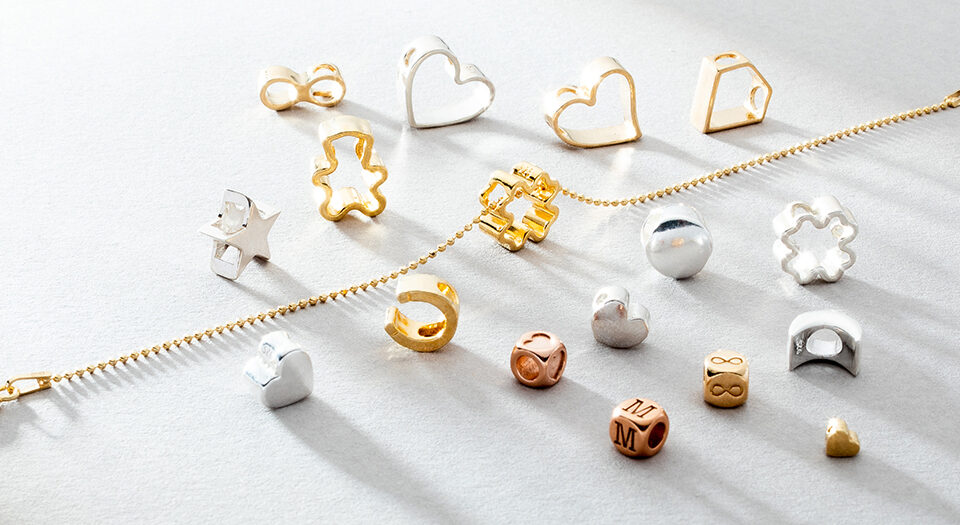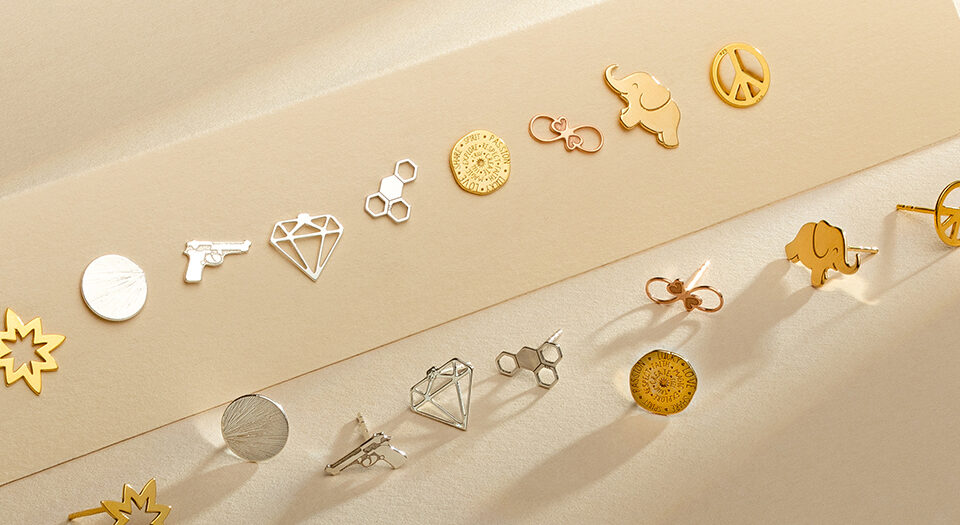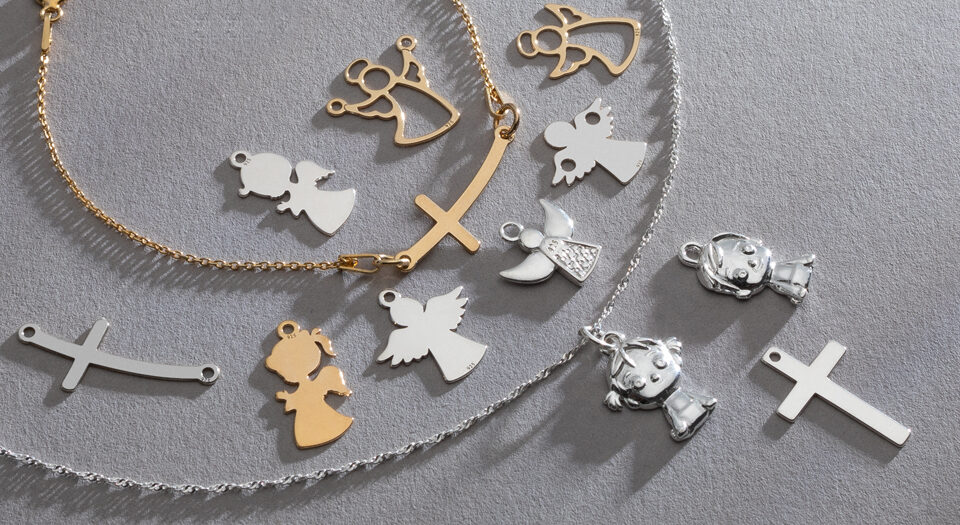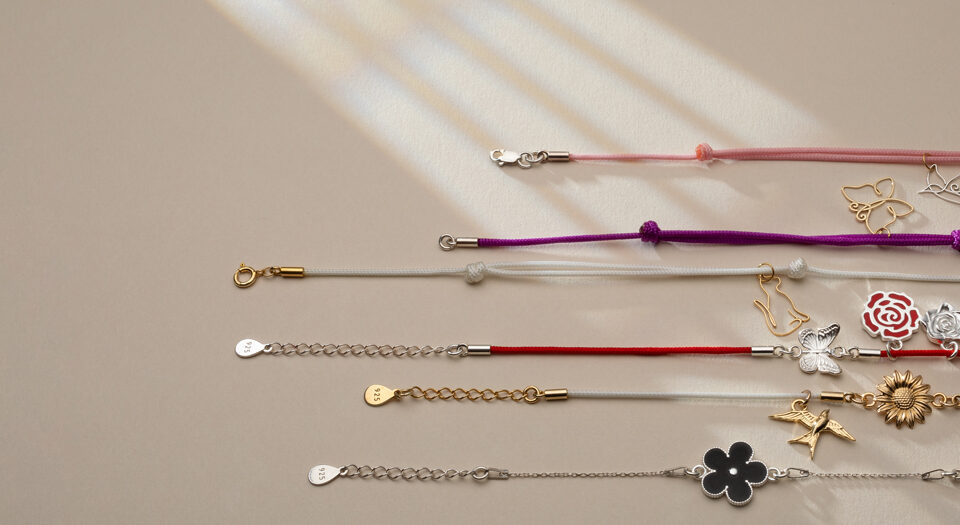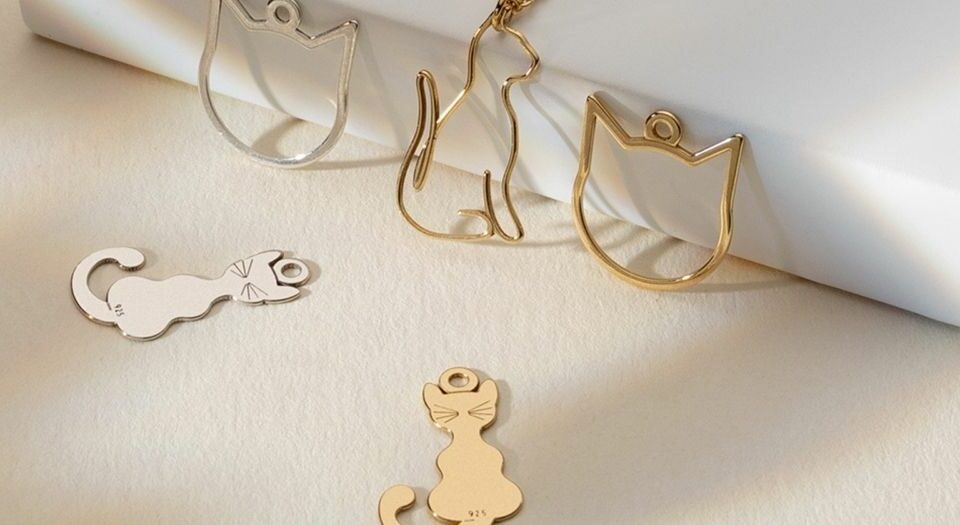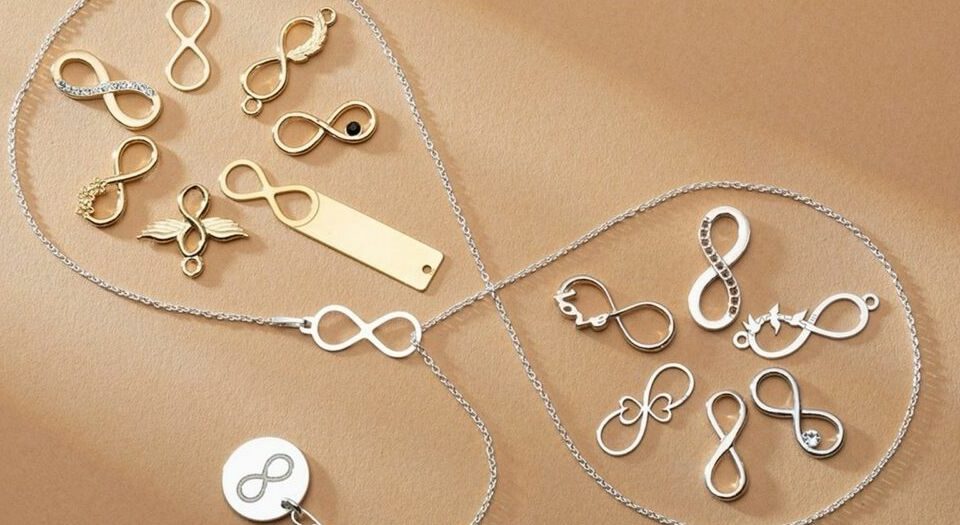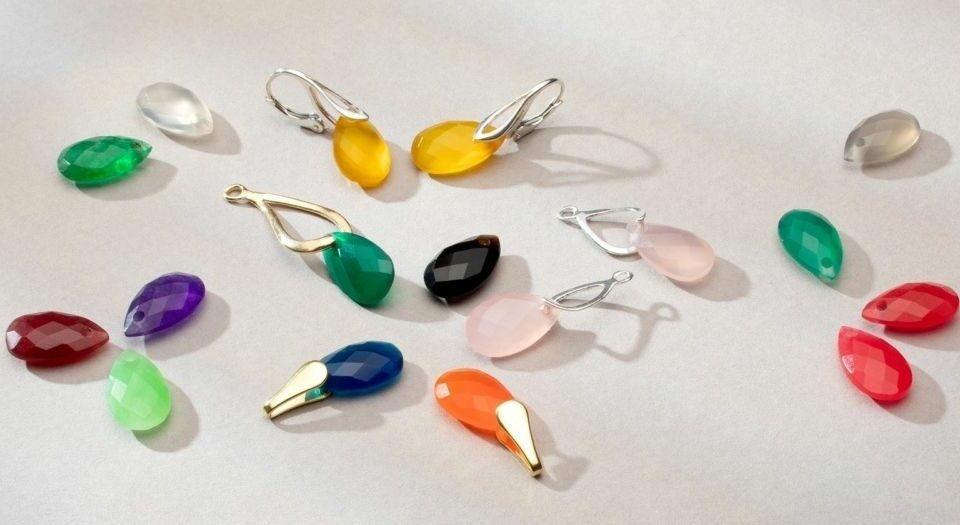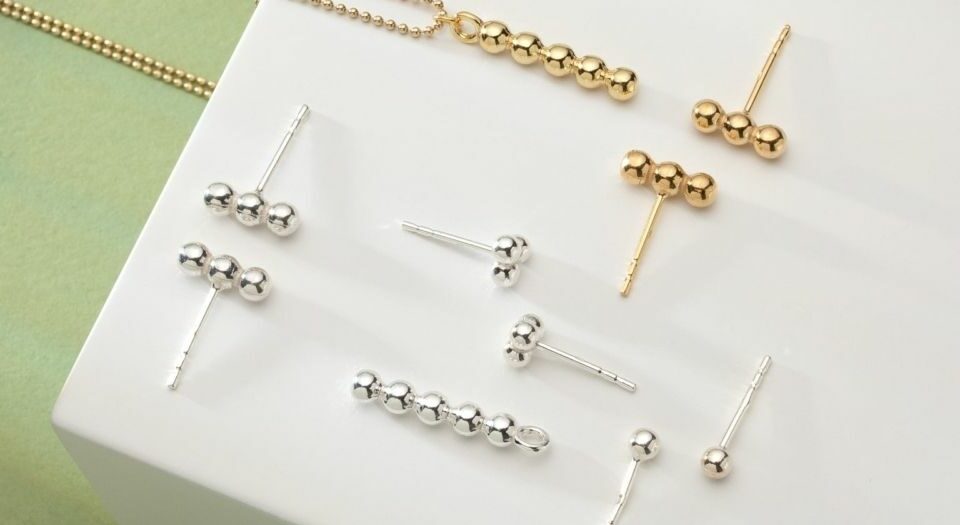- Contact us:
- +48 17 2300 400
- [email protected]
The best jewelry ends: essential findings for your crafting projects

Making jewelry with crystals – a guide for jewelry makers
December 5, 2024Discover essential jewelry end caps for your crafting projects. Enhance your creations with the right jewelry findings. Read the article to elevate your designs!
Jewelry end caps are small but incredibly important jewelry components that often determine the durability, aesthetics, and functionality of the final design. While they may seem like minor additions at first glance, they play a key role in the jewelry making process – not only for silver jewelry but also for pieces made from various materials such as jewelry wire, beading thread, stretch cord, line, or leather. Silver ends stand out due to their exceptional durability, elegant appearance, and versatility, making them a perfect match for various styles and crafting techniques.
In this guide, we will explain what jewelry endings are, what the most popular types are, and what their functions are. We will show you how to finish jewelry using these supplies, providing practical examples of their applications. We will also discuss the most common mistakes made when using them, helping you avoid issues during the creation process. Whether you are just starting out in jewellery making or are already an experienced artisan, this article will offer valuable tips and inspiration for your work.
What are jewellery end caps and what are their functions?
Jewelry endings are used to finish and secure jewellery such as necklaces, bracelets, and earrings. They serve essential functions: they connect individual parts of the jewelry, allow to attach jewelry clasps and closures, and add an aesthetic finish. Jewellery ends can be used with various materials such as jewelry wire, line, cord, or leather, ensuring durability and comfort when wearing the jewellery. Thanks to these jewelry supplies, the accessory not only beautiful but also functional and safe to wear.
Why choose sterling silver findings?
Sterling silver and gold end caps are an excellent choice for anyone looking to add elegance and durability to their creations. Findings for jewelry making made from precious metals not only provide an aesthetic appearance but also resistance to corrosion and damage, enhancing the longevity of the jewellery. Additionally, silver and gold findings pair beautifully with various materials, emphasizing their value. Choosing silver or gold ends elevates the prestige of the jewelry, making it more luxurious and timeless. Silver findings are also more affordable than gold, making them a great choice for those seeking high-quality jewelry at an accessible price.
Furthermore, we offer end caps coated with 18 and 24-karat gold, 18-karat rose gold, rhodium, and platinum, which further enhance their durability and add exceptional shine. Gold plating give the jewelry a warm, elegant appearance, while rhodium and platinum offer protection against oxidation and additional resistance to scratches. These coatings give jewellery a unique, luxurious character and make it more resistant to daily wear, maintaining its aesthetic appeal over time.
Types of jewellery end caps
Among the types of jewelry ends, you can find chain ends, bead caps, crimp beads, tube end caps, crimp bead knot covers, wire guardians, and leather cord ends. Each type of end cap has its own specific application and can be used in different types of jewelry.
Chain ends are popular accessories used to finish chains by soldering. Their design allows easy attachment of a jump ring, which serves as an intermediate connector for clasps, pendants, connectors, extenders, or other jewelry elements. This solution makes chain end extremely versatile, allowing for the creation of elegant necklaces, bracelets, and dangling earrings. We offer different models of chain ends, suitable for both delicate and thicker chain links.
Crimp beads and covers also known as calottes and clamshell bead tips, are commonly used to finish beaded bracelets and necklaces made from steel or silver wire, or jewellery thread. They are used in jewelry created by threading pearls, gems or other beads. We offer a wide range of bead tips with loop or hook, side bead tips, and double bead tips, all available in various sizes. Side bead tips are also perfect for finishing jewelry made from ball chains. Clamshell crimp beads can be connected to the clasp using a jump ring. In addition to clasps, you can also enhance your jewellery with chain extenders, hallmark tags, or pendants with the jewelry maker's logo.
Crimp tubes for jewelry making are cylindrical findings ideal for finishing jewelry made from threads or chains. These tubes are equipped with a small ring that allows them to be connected to other elements, such as jewelry clasps, extenders, pendants, earring findings, or necklace chains. Depending on the design, they can also be used for gluing textile decorations like tassels, feathers, or beaded accessories, creating unique pendants for earrings, necklaces, or bracelets. Our stock mainly offers smooth models, but if you need decorative or textured sterling silver crimp tubes, please contact our customer service.
Fold over end caps – jewelry components used for crimping, which serve as connectors between elements such as cords and clasps. Fold over crimp ends can also be used for feather assembly. When using this type of crimp end caps, it is advisable to reinforce the connection with jewelry glue to ensure the durability and stability of the decoration.
Wire guardians for jewellery making – components used to finish jewelry made with wire, thin cords, or threads. They are often used in string bracelets or necklaces with woven elements.
Crimp covers – crimp shields that are placed over crimp end beads or knots to hide and protect them, giving the jewelry an aesthetic appearance. They are often used in necklaces and beaded bracelets.
Crimp beads – small crimp tubes or silver beads used to secure the ends of threads, wires, chains, or cords, typically to block decorations from sliding off.
How to finish cord bracelets
Finishing a cord bracelet is a crucial step in the creation process, ensuring both durability and an aesthetic look. There are many methods available to precisely finish a bracelet, depending on the chosen style and preferences. One of the most popular options is using crimps for jewelry making, which are clamped onto the ends of the cord, creating a solid connection with the clasp. In this case, jump rings can be added to the crimp ends to attach a clasp, or silver pendants.
Another option is to use bracelet end caps, which have rings that allow easy connection with other elements such as extenders or clasps. These cord ends for jewelry are perfect for gluing threads, as they stabilize the ends of the material and prevent fraying. Each of these methods ensures a sturdy, aesthetically pleasing finish that gives the jewelry a professional appearance. Both jewelry crimps and thread caps are available in various sizes, so you can adjust them to different project sizes.
Other supplies for jewelry making
Jewelry findings can be made from various materials, such as silver, gold, or surgical steel. In our store, we primarily offer high-quality 925 sterling silver that is nickel-free and gold 585. In addition to jewelry crimp beads, you can find bracelet chains, necklace, earring, ring, and cufflink blanks, pendants, jumprings, clasps, jewelry bails, jewelry pins, jewelry wires, bulk chains, and soldering components, as well as pearls, crystals, zircons, gemstones, and semi-precious stones. If you cannot find the product you are looking for, feel free to contact us for custom jewelry projects.
Common mistakes when finishing jewelry
One of the most common problems in jewellery making process using crimp beads is choosing the wrong size of bead tips for jewelry making for the elements being worked on. A too-small setting may not fit the thickness of the material, such as line or chain, which can make assembly difficult or even impossible. On the other hand, too-large crimp end caps for jewelry can make the jewelry look unappealing or overly heavy. To avoid this problem, it’s essential to measure the diameter of the line or the thickness of the wire or chain before selecting the crimp ends for jewelry making, ensuring it matches the size of the material you're working with.
Another challenge is choosing the proper method for attaching the ending. For crimp beads for jewelry making, it's important to properly crimp them onto the ends of the line to avoid loosening, which can lead to jewellery breaking. When working with cord end findings, ensure they are properly soldered or glued, depending on the material. Improper attachment can cause the ending to shift or deform, which can damage the entire piece. A common mistake is also using the wrong tools for crimping, which can lead to deformation or uneven crimping, creating an unattractive finish. To avoid this, use proper jewelry tools, such as crimping pliers, which ensure even and precise attachment.
It’s also important not to neglect the quality of materials – low-quality endings can wear out quickly, leading to durability issues with the jewelry. That's why we recommend using 925 sterling silver crimp beads, which are best coated with gold, rhodium, or platinum, as these precious metals enhance the durability of the jewellery, protect it from tarnishing and corrosion, and give it an elegant, luxurious look that improves the aesthetic and value of the final product.
Jewelry endings, though often underrated, play a crucial role in the jewellery making process, both in terms of functionality and aesthetics. They provide jewellery with durability, an elegant appearance, and a professional finish. In this guide, we discussed various types of crimp beads, such as chain ends, crimp tubes, bead tips, sterling silver crimp bead covers, wire guardians and gold crimp beads, which allow for precise finishing of jewelry designs. Choosing the right endings, considering their size and attachment method, is key to the stability and aesthetics of the pieces. It is also important to choose the highest quality materials, such as 925 sterling silver, which, with additional coatings of precious metals like gold, rhodium, or platinum, not only ensure durability but also give the jewelry a unique, luxurious appearance. Avoiding common mistakes when working with silver crimp covers, such as improper size selection or incorrect attachment methods, is crucial to prevent functionality and aesthetic issues in the final design.
Want to find out more?
-
Find out How to start jewelry business
-
Get inspired How to make cord bracelets
-
Discover our semi-precious stones and their wide range of colours
If you found this article valuable, we would be grateful if you like, share with others, or comment. Thanks and Have a Nice Day!
Follow us:
Instagram: @jewelry.findings
Facebook: 925CRAFT World
YouTube: DIY WITH 925CRAFT
LinkedIn: 925CRAFT
Pinterest: 925CRAFT
TikTok: 925CRAFT (@925CRAFT)
Join our group of jewellery makers: Making jewellery with 925CRAFT
Related posts
Making jewelry with crystals – a guide for jewelry makers
Trendy jewelry for winter 2024/2025, Christmas and New Year’s Eve
Cube beads with letters for jewellery making
How to Make Charm Bracelets and Bead Bracelets
Popular jewelry motifs – part 2
Popular jewelry motif – part 1
How to make jewelry for communion
How to make string bracelets – a guide for jewelry makers from 925CRAFT
How to make cat themed jewelry
Infinity bracelets and clover bracelets – how to make bracelets with symbols
Wholesaler of natural stones for making jewelry – 925CRAFT
How to start a jewelry business – a guide for beginners

